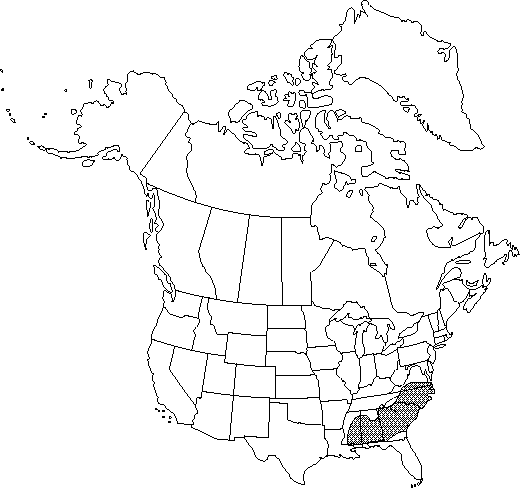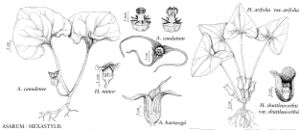Difference between revisions of "Hexastylis arifolia var. arifolia"
EndemicIllustrated
Treatment appears in FNA Volume 3.
imported>Volume Importer |
imported>Volume Importer |
||
| Line 48: | Line 48: | ||
|publication year= | |publication year= | ||
|special status=Endemic;Illustrated | |special status=Endemic;Illustrated | ||
| − | |source xml=https:// | + | |source xml=https://bitbucket.org/aafc-mbb/fna-data-curation/src/2e0870ddd59836b60bcf96646a41e87ea5a5943a/coarse_grained_fna_xml/V3/V3_871.xml |
|genus=Hexastylis | |genus=Hexastylis | ||
|species=Hexastylis arifolia | |species=Hexastylis arifolia | ||
Latest revision as of 22:51, 5 November 2020
Flowers: calyx tube narrowly urceolate-campanulate, 13-18 × 6-10 mm; lobes spreading, 2.5-8 × 3-9 mm. 2n = 26.
Phenology: Flowering late winter–spring (Mar–May).
Habitat: Upland deciduous and mixed deciduous-conifer forests
Elevation: 0-600 m
Distribution

Ala., Fla., Ga., La., Miss., N.C., S.C., Tenn., Va.
Discussion
Selected References
None.
Lower Taxa
None.
